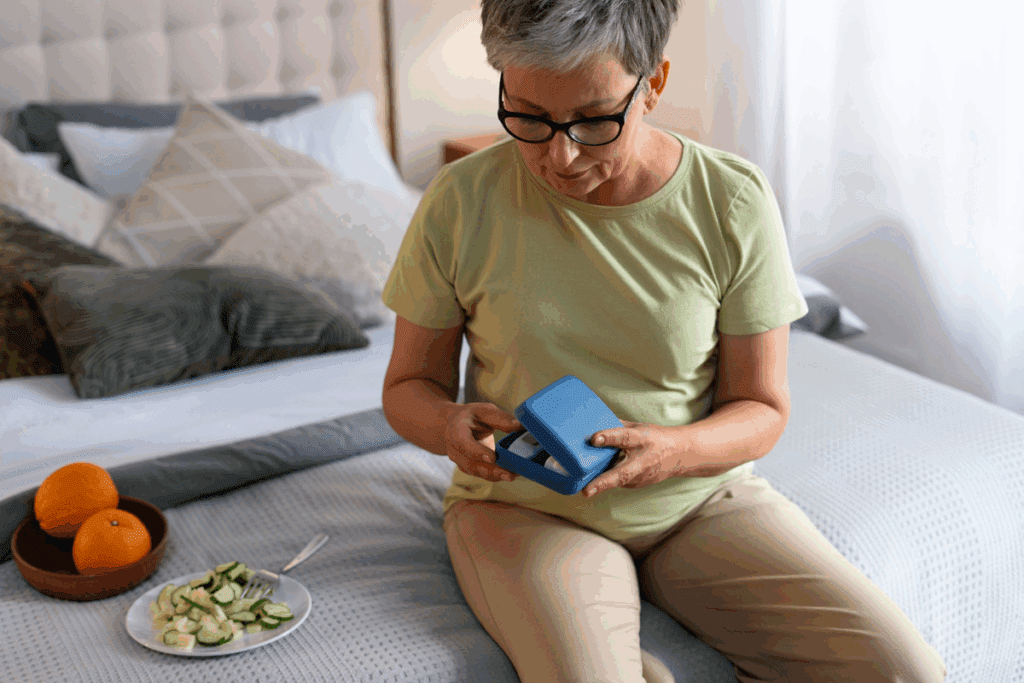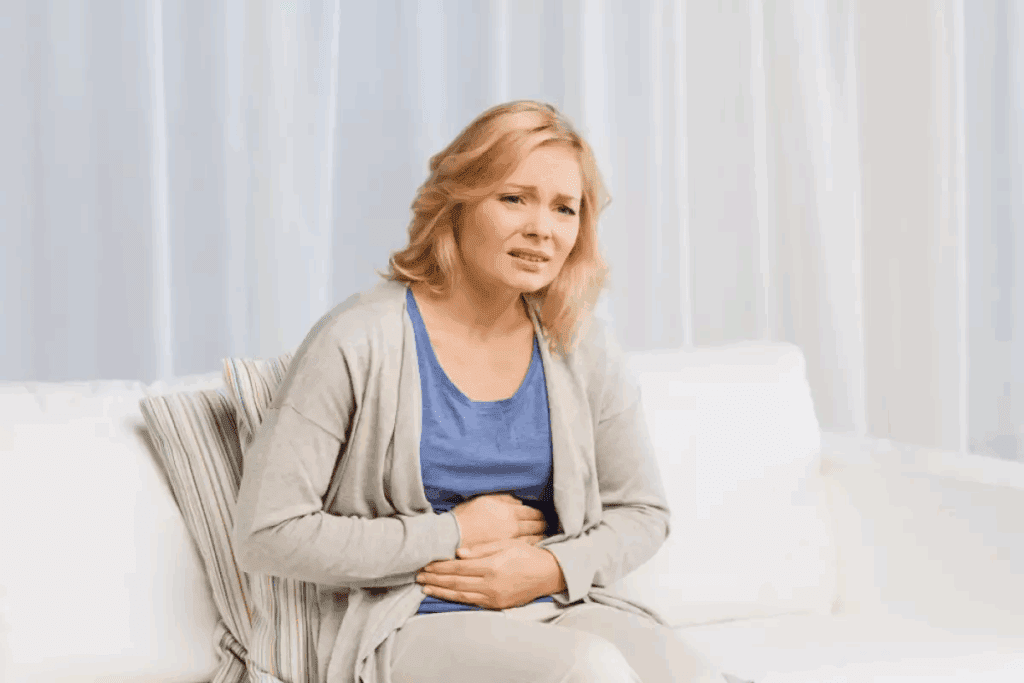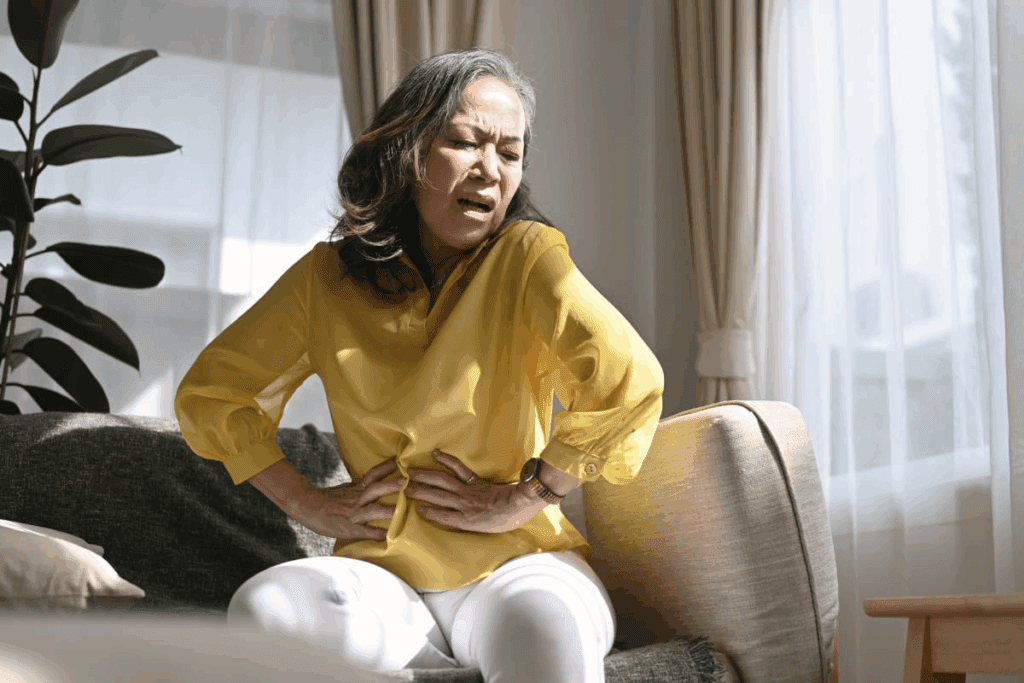Last Updated on November 26, 2025 by Bilal Hasdemir

Percutaneous cholecystostomy is a minimally invasive way to treat acute cholecystitis. It’s for patients who can’t have surgery right away. Taking care of a perc cholecystostomy tube needs to be precise and focused on the patient.
At Liv Hospital, we know how critical proper care and management of the tube are. We’ll show you the key steps for cholecystostomy tube care. This way, patients can get the best results after percutaneous gallbladder drainage.
Our detailed guide will help you understand how to manage your care step by step. You’ll gain the knowledge and confidence to take care of yourself effectively.

Percutaneous cholecystostomy is a lifesaver for those with acute cholecystitis who can’t have surgery right away. It drains the infected gallbladder. This method is safe and works well for patients who can’t have surgery yet.
The main goal of percutaneous cholecystostomy is to temporarily relieve the gallbladder. This reduces inflammation and infection. It’s a stepping stone to more lasting treatments like cholecystectomy when the patient gets better.
Percutaneous cholecystostomy tube placement is for patients with acute cholecystitis. They can’t have surgery right away because of health issues, age, or severe inflammation.
| Indication | Description |
| Acute Cholecystitis | Inflammation of the gallbladder, often due to gallstones. |
| High Surgical Risk | Patients with comorbidities or other factors that increase surgical risk. |
| Gallbladder Empyema | Pus accumulation in the gallbladder, requiring drainage. |
Knowing how percutaneous cholecystostomy helps with acute cholecystitis is key for doctors. It offers a temporary fix that can greatly improve patient care.

A cholecystostomy tube is a medical device used to drain the gallbladder. It’s important to know its parts for good care. The tube connects to a drainage system that collects bile from the gallbladder. This is key for patient care after the procedure.
The drainage system has a few main parts. The cholecystostomy tube goes into the gallbladder. There’s also a drainage catheter that links the tube to a collection bag. The collection bag holds the bile from the gallbladder.
The cholecystostomy tube lets bile drain from the gallbladder into the collection bag. This helps reduce inflammation and infection. It’s important for the tube to work well for good drainage and patient comfort.
There are different types of cholecystostomy tubes, like pigtail catheters and straight catheters. Each has its own features and uses. The doctor chooses the type based on the patient’s needs and their own preference.
Managing a perc cholecystostomy tube well after placement is key to avoiding problems and ensuring a good recovery. The first few days are very important. Knowing how to care for it can greatly improve your health.
For the first 24-48 hours, rest and avoid hard work. This time is vital for your body to start healing.
Knowing what to expect from the drainage helps spot any problems early. At first, the drainage might be bloody or have bits in it. This is usually normal.
Key things to watch include:
Managing pain is a big part of caring for yourself after the procedure. You might feel pain or discomfort where the tube was put in or in your belly.
Good ways to manage pain include:
Talking to your healthcare team about your pain is very important.
Managing a perc cholecystostomy tube daily is key for patient health and tube performance. It helps avoid problems and keeps the tube working right.
It’s important to check the perc cholecystostomy tube regularly. Look for signs of infection, blockage, or if it’s come loose every day.
Keeping the perc cholecystostomy tube in place is critical. Use the right securing devices but avoid being too tight to prevent skin irritation.
Tips for securing the tube:
Handling the drainage bag correctly is important for patient cleanliness and safety. Empty it when it’s half full to prevent tube dislodgment.
Guidelines for drainage bag management:
| Task | Frequency | Notes |
| Empty the drainage bag | When half full | Record the output volume |
| Clean the drainage bag | Daily | Use soap and water, rinse thoroughly |
| Check for leaks | Daily | Inspect connections and the bag itself |
By sticking to this daily care plan, patients and caregivers can keep the perc cholecystostomy tube working well. This reduces the chance of problems.
Cleaning and dressing the insertion site right is key for healing and avoiding infection. We’ll show you how to keep the site clean and help it heal.
To clean the insertion site, follow these steps:
Changing the dressing often is key to keep the site clean and dry. Here’s how to do it:
The insertion site should be cleaned daily and the dressing changed as needed. But, the frequency might change based on the doctor’s advice or your health.
| Care Activity | Frequency | Notes |
| Cleaning the Site | Daily | Use mild soap and lukewarm water |
| Dressing Change | As needed | Change if soiled or wet |
| Inspecting the Site | Daily | Look for signs of infection |
By following these guidelines, patients can keep the insertion site clean and promote healing. Always talk to healthcare professionals if you have concerns or notice any complications.
To keep the cholecystostomy tube working well, it needs regular flushing. This helps prevent blockages and keeps the tube open. It’s key for managing the patient’s health.
Flushing the cholecystostomy tube is important to keep it open. How often you flush depends on the patient’s health and how much fluid is drained. Your doctor will tell you how often to do it.
Flushing removes debris and keeps the tube clear. This stops blockages and ensures the fluid drains properly. It also checks if the tube is working right.
The flushing technique uses sterile saline to clean the tube. It’s important to do this carefully to avoid infections.
Keeping a detailed record of the flushing is very important. It tracks the tube’s care and any problems. Note the date, time, saline amount, and any tube or patient observations.
By following these steps for flushing the cholecystostomy tube, you help manage the drainage system well. This makes recovery smoother for the patient.
Understanding drainage monitoring is key to spotting problems early with a cholecystostomy tube. We’ll cover the important parts of monitoring, like volume, color, and consistency. This helps manage the tube right.
Drainage from a cholecystostomy tube looks different, and knowing the normal from abnormal is important. Normal drainage is usually greenish-yellow because of bile. But, changes in color, consistency, or volume can mean trouble.
Abnormal drainage might include:
Keeping track of output measurements is key to checking the tube’s work and the patient’s health. It’s a good idea to log daily drainage volume to spot trends or big changes.
| Date | Drainage Volume (mL) | Color/Consistency | Notes |
| 2023-04-01 | 250 | Greenish-Yellow | Normal |
| 2023-04-02 | 260 | Greenish-Yellow | Normal |
| 2023-04-03 | 300 | Cloudy | Abnormal |
Changes in drainage can mean trouble, like infection or tube problems. We’ll talk about why it’s important to notice these changes and what to do next.
Any big changes in drainage volume, color, or consistency need to be told to the healthcare provider right away. For example, a sudden increase in volume or a darker color might mean a blockage or other problem.
By watching drainage closely and tracking output, we can catch issues early. This helps keep the cholecystostomy tube safe and working well.
Complications from perc cholecystostomy tubes can be serious. Knowing how to spot and handle them can make a big difference. These tubes are generally safe but can cause problems that need quick action.
One big issue is when the tube comes out or moves. This can cause bile to leak into the belly, leading to peritonitis.
If the tube is pulled out, cover the area with a clean dressing. Then, get medical help right away.
Steps to avoid tube dislodgement include:
Blockages or kinks can stop the tube from working right. This can cause bile to build up, leading to pain, infection, or even gallbladder rupture.
To fix blockages or kinks, flush the tube as your doctor told you to. If it’s kinked, try moving it to fix the problem.
Infections are a big risk with these tubes. Look out for fever, redness, swelling, more pain, or discharge.
To fight infection, watch the tube site closely. Keep it clean during changes. Use antibiotics if your doctor says so.
If you think you have an infection, see a doctor fast.
Leakage can happen for many reasons, like the tube coming out or blockages. It can also happen if the tube erodes through the gallbladder wall.
To deal with leakage, find and fix the cause. This might mean adjusting the tube, flushing it, or sometimes replacing it.
Knowing about these problems and how to deal with them can help patients and caregivers. It can make the treatment of perc cholecystostomy tubes more successful.
Patients with a cholecystostomy tube must watch their diet closely. This helps avoid complications and aids in healing. A balanced diet supports recovery and manages side effects from the tube.
We suggest patients eat a normal diet, focusing on foods rich in nutrients. Nutritious food choices include:
While a normal diet is good, some foods should be avoided or eaten in small amounts. These include:
Staying away from these foods can prevent discomfort and ensure a smoother recovery.
Drinking enough water is key for patients with a cholecystostomy tube. We advise drinking lots of water all day to:
Patients should aim for 8-10 glasses of water a day. Adjust this based on their needs and activity level.
Living with a cholecystostomy tube means you need to know about activity limits and lifestyle changes. It’s important to find a balance between being careful and enjoying life.
When you move or change positions, be careful not to harm the tube. Always secure the tube with the right dressings. Your doctor might suggest using a special device to keep it in place.
It’s okay to bathe or shower with a cholecystostomy tube, but you need to be careful. Always cover the tube site with a waterproof dressing or bag to keep water out.
Wearing the right clothes can make caring for your cholecystostomy tube easier. Choose loose-fitting clothing that doesn’t press on the tube or the site where it was inserted.
Going back to your usual activities is important for your health. But, do it only with your doctor’s advice.
“The key to a successful recovery is not just managing the cholecystostomy tube but also adapting your lifestyle to accommodate it safely.” – Dr. Jane Smith, Gastroenterologist
Begin with simple activities and slowly add more as you feel comfortable and your doctor says it’s okay.
The journey from percutaneous cholecystostomy to cholecystectomy is well-planned. For many, cholecystectomy is the next step after a percutaneous cholecystostomy tube is placed.
The timing of cholecystectomy after percutaneous cholecystostomy varies. It depends on the patient’s health, the cause of their gallbladder disease, and clinical guidelines. Generally, the decision on when to proceed with cholecystectomy is made on a case-by-case basis, considering factors like inflammation resolution and surgical risk.
Before cholecystectomy, patients get a detailed pre-surgical evaluation. This includes reviewing their medical history, lab tests, and imaging studies. It’s important for patients to follow their healthcare provider’s instructions for surgery preparation.
Proper management of the percutaneous cholecystostomy tube is key before cholecystectomy. Patients should continue with routine care and flushing as directed. Any tube issues, like blockages or dislodgement, need to be quickly fixed to avoid complications.
During the transition, patients get a coordinated care plan from their healthcare team. They will get guidance on surgery preparation, tube management, and post-operative recovery. Clear communication with healthcare providers is key to a smooth transition.
Proper care of the perc cholecystostomy tube is key to avoiding problems and ensuring a good recovery. We’ve covered the main steps for managing this tube. It’s all about the right care to prevent issues.
By following the advice in this article, patients can lower the risk of complications. This helps them move smoothly towards further treatment, like removing the tube or a cholecystectomy. Good tube management is essential for a successful recovery.
We stress the need for careful attention, proper care, and following guidelines for managing the perc cholecystostomy tube. This approach helps patients recover better and get the best results.
A percutaneous cholecystostomy tube is a medical device. It’s inserted through the skin into the gallbladder. It drains infected bile or other fluids.
A cholecystostomy tube is placed for acute cholecystitis. This is when the gallbladder gets inflamed, often from gallstones. It’s for high-risk patients who can’t have surgery right away.
To care for your site, clean it step by step. Change the dressing as told. Watch for signs of infection like redness or swelling.
Flushing your tube depends on your doctor’s advice. It keeps the tube open and prevents blockages.
Complications include tube dislodgement, blockage, infection, or leakage. Look out for pain, fever, redness, or swelling. Also, watch for changes in drainage.
Your doctor will tell you about bathing. You might need to keep the site dry or use a waterproof dressing.
Your doctor will suggest foods to eat and avoid. They’ll also tell you about staying hydrated to manage your health.
The time with a tube varies based on your condition and treatment. It might be temporary until surgery, or longer.
Transitioning means a pre-surgery check, managing your tube, and knowing what to expect. Your doctor will guide you on when to have surgery.
Manage your bag by emptying it regularly. Watch the output measurements and drainage characteristics for any issues.
Normal drainage is bile or a bile-like fluid. Look out for changes in color, consistency, or volume. Your doctor will tell you what to watch for.
You can start doing daily activities again as your doctor advises. Consider safe movement and any lifestyle changes needed.
Pietrangelo, A. (2024). Managing weight loss after gallbladder removal. Medical News Today. Retrieved from
Subscribe to our e-newsletter to stay informed about the latest innovations in the world of health and exclusive offers!